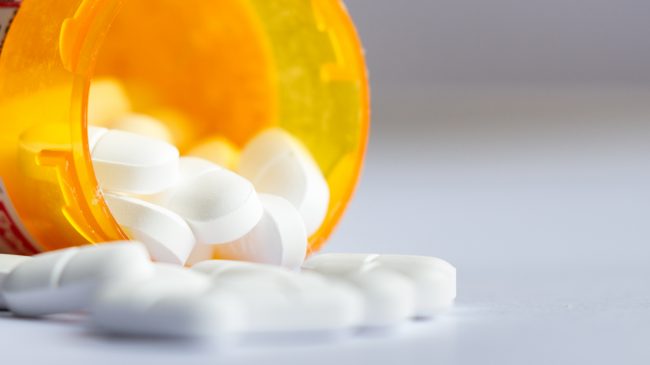On Wednesday, President Trump signed an omnibus opioid crisis bill that Rep. Greg Walden, R-Ore., the bill’s author, called “the most significant congressional effort against a single drug crisis in history.” Known as the SUPPORT for Patients and Communities Act, it’s a conglomeration of more than 60 bills that appropriate billions of dollars to a plethora of House Energy and Commerce Committee actions. Just in time for the midterms, some congressmen can now say they “addressed the opioid crisis.” But given that the bill bolsters many prior and dangerous interventions, we should only expect the crisis to get worse because of it.
In the last decade, the media failed to discuss the opioid crisis, although regulators started to notice a steady rise in opioid-related deaths and opioid prescribing. As early as 2002, this observation prompted federal funding for state-level prescription drug monitoring programs (PDMPs), which are electronic databases that allow the government to surveil its citizens’ medical prescribing history. At first, PDMPs were an optional service for doctors, but as opioid overdoses rose more than 180 percent between 1999 and 2012, many states started mandating various forms of doctor participation.
Since the Controlled Substances Act allows the Drug Enforcement Administration broad authority to circumvent Fourth Amendment judicial approval for warrants in drug-related cases, federal authorities have been secretly accessing these doctors’ prescribing records en masse. Fearing large crackdowns by authorities like the Department of Justice, physicians drastically decreased their opioid prescribing. But this government intervention had one major flaw — the crisis was not caused by prescribing. After a 28 percent decrease in opioid prescribing since 2012, opioid overdose death rates have now doubled.
The government’s own data show non-marijuana illicit drug use has actually remained stable since 2002. The only difference now is that users are exposed to less pharmaceutical-grade options. When drugs aren’t supplied by the legal market and clean, they’ll inevitably be supplied by the illegal market and dirtier. Of course, clean drugs can be found on the streets — if you can pay premium price, you can have a bottle of oxycodone dropped off by your dealer. But if you don’t have $600 for a couple weeks’ supply, you must consider cheaper options — like injectable heroin laced with fentanyl, which is 100 times more potent than morphine. You may be able to find the same oxycodone pills from less expensive sources, but if they are counterfeit and adulterated with fentanyl, you risk the same tragic death as Prince.
Regulators sometimes concede that substitution to the black market from decreased prescribing is a necessary evil to prevent new addictions caused by pain pills ending up with whom they were not prescribed. But pain reliever abuse rates have also been relatively stable since 2002, meaning we can’t blame the current opioid crisis on pain pill “overprescribing” or big pharma. Some users are responsible, some are addicts, but all are at higher risk of overdose from decreased prescribing.
The bill that Trump just signed touts “evidence-based” approaches, but they’re nowhere to be found. States only exacerbate their opioid crises when they reduce prescribing. When doctors are forced to report their patients’ medical records to authorities, opioid prescribing decreases and the number of deaths immediately increases in almost every state. For example, there was little change in New Hampshire’s opioid death rate before it forced doctors to register with its PDMP in 2012 — but afterwards the state’s death rate tripled by 2016.
The omnibus opioid bill will increase state support for PDMPs and encourage states to mandate doctor participation. This will further lower prescribing and drive demand for opioids to the deadly black market. Instead, we should resume trusting doctors to treat their patients and terminate PDMPs.
The bill also seeks to increase the cap of licensed doctors to prescribe buprenorphine from 100 patients to 275. A move in the right direction, but given that more than 2 million people abuse opioids, and there are currently only 2,471 buprenorphine licenses to treat 100 patients, it will be illegal for most to obtain treatment for a long time. We should instead follow France’s lead and suffocate the black market by allowing all physicians to prescribe buprenorphine.
If the Trump administration wants to make meaningful change, there are plenty of actions it can take that don’t waste taxpayer resources. For example, it could direct Secretary of Health and Human Services Alex Azar to request a reschedule of naloxone so that it’s available over-the-counter. Naloxone is an opioid overdose reversal agent that is easy to administer, nonaddictive, and safe to consume for anyone in any situation. Since naloxone has already saved thousands of lives, this move should not be controversial.
Walden may be right that his bill is significant, but it will do little more than exacerbate the problems government itself created. Though the government seldom admits its own wrongdoing, we shouldn’t allow Congress and the president to further restrict access to opioids through a police state of prescribing. In the end, we’ll be doing a disservice to those already suffering and only cause more overdoses. And when government is by the people, its people are responsible for its sins.
This article originally appeared in the Washington Examiner.

